Bodywork Paint Thinner for high-quality applications
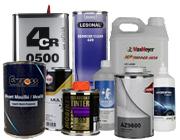
Bodywork Paint Thinner
-
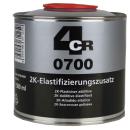 0700.05002K elasticizing Additive0,5L
0700.05002K elasticizing Additive0,5L -
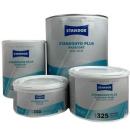 2080045Standohyd AdditiveColor Blend 1L
2080045Standohyd AdditiveColor Blend 1L -
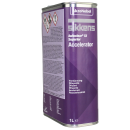 364907Autoclear acceleratorLV Superior Accelerator 1L
364907Autoclear acceleratorLV Superior Accelerator 1L -
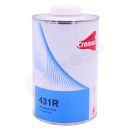 431RDrying acceleratorVarispeed Ultra 1L
431RDrying acceleratorVarispeed Ultra 1L -
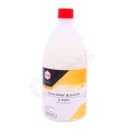 50448681Onyx HD fitting AdditiveOnyx Easy Blender A 2520 1L
50448681Onyx HD fitting AdditiveOnyx Easy Blender A 2520 1L -
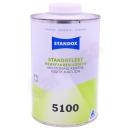 5100Standofleet AdditiveMultitoning 1L
5100Standofleet AdditiveMultitoning 1L -
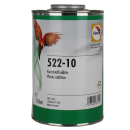 522-10AdditivePlastic -1L
522-10AdditivePlastic -1L -
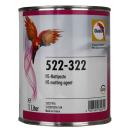 522-322High Solid matting paste1L
522-322High Solid matting paste1L -
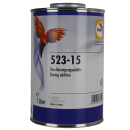 523-15Racing Additive1L
523-15Racing Additive1L -
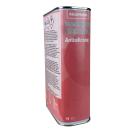 525367Antisilicone Additive1L
525367Antisilicone Additive1L -
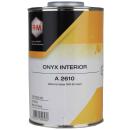 53232552Onyx HD Interior Additive1L
53232552Onyx HD Interior Additive1L -
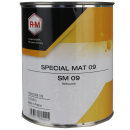 53235573Universal matting agentSpecial Mat09 1L
53235573Universal matting agentSpecial Mat09 1L -
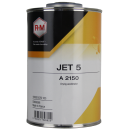 53236739Drying acceleratorJet 5 1L
53236739Drying acceleratorJet 5 1L -
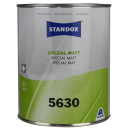 56302K Special Matting AgentSpecial Matt 1L
56302K Special Matting AgentSpecial Matt 1L -
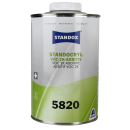 5820Standocryl VOC 2K Additive1L
5820Standocryl VOC 2K Additive1L
︾
Thinner for body repairers: Discover the leading brands of auto body repair products
Find out all about Thinners in the world of car bodywork :
1. Choice:
Make sure you're using the right product recommended by the manufacturer. Thinners are specifically formulated to work with certain types of paint or Clearcoat. They can be universal...
2. Preparing the mixture :
Before starting, make sure the Paint is well mixed. Use a stirrer to ensure a homogeneous consistency.
3. Measure accurately:
Measure precisely the amount of paint you plan to use. The proportions between paint and Thinner are often specified by the manufacturer.
4. Add gradually:
Add thinner to paint gradually. Stir well with each addition to avoid adding too much at once.
5. Check viscosity:
Check the viscosity of the mixture by pouring a small amount onto a horizontal surface. The Paint should spread evenly without streaking.
6. Spray test:
If you are using a professional spray gun, carry out a spray test on a test surface. Check fineness and adjust if necessary by adding more Thinner.
7. Working conditions:
Take atmospheric conditions into account. High temperatures may speed up drying, while lower temperatures may require less Thinner.
8. Cleaning of equipment :
After use, thoroughly clean the gun or any other equipment that has been used during repairs. Certain Thinners can also be used to clean application tools.
9. Important advice :
Carefully follow the recommendations of the paint and Thinner manufacturer. as an inappropriate quantity can compromise the quality of the coating.
10. Safety:
Use Thinner in a well-ventilated area. Wear personal protective equipment, including appropriate masks, to avoid inhalation of potentially harmful vapours.
11. Storage :
Keep Thinner in airtight containers and out of direct sunlight. Follow the manufacturer's storage instructions.
12. Compliance with environmental standards:
Make sure you comply with local environmental regulations when disposing of Thinner. Some Thinners are designed to reduce volatile organic compound (VOC) emissions.
By following these steps and taking into account the manufacturer's specific recommendations, you will be able to use the Thinner effectively and achieve high-quality results in your car bodywork projects.
The different types of Thinner :
Thinners are mixtures of solvents used to adjust the viscosity of paints, varnishes and inks. They are essential in car bodywork to ensure uniform application and a high-quality finish. Here is an explanation of the different types of Thinner:
1. Solvent-based Thinners :
Solvent-based Thinners are used to thin solvent-based paints. They may be based on white spirit, xylene, toluene or other volatile organic compounds (VOCs). These thinners are suitable for solvent-based paints and promote fast drying.
2. Hydro Thinners :
Thinnersare used to thin water-based paints. They are specifically designed to be compatible with water-based paints, helping to adjust viscosity without affecting paint properties. Thinners also reduce VOC emissions compared to solvent-based thinners.
3. Thinner :
Thinners are used to join repaired or repainted areas with existing areas. They are formulated to ensure a smooth transition between old and new coats of paint, giving an even finish.
4 Bodywork additives:
These are substances added to paint or Clearcoat to improve certain properties. They can act as Thinners, adjusting the viscosity of the paint. Other additives may offer specific properties, such as anti-sag agents to prevent the paint from dripping.
5. Clearcoat tinter ink :
Clearcoat inks are used to tint or colour clearcoats. They can be mixed with the Clearcoat to create custom tints while maintaining the transparency of the coating. Clearcoat tinter inks are often used in projects requiring coloured finishes.
6. Manufacturer-specific Thinners :
Some Paint brands offer specific Thinners designed to be used exclusively with their products. These Thinners are formulated to ensure good compatibility and excellent performance with the brand's paints.
7. Low VOC Thinners :
Low-VOC Thinners are alternatives that reduce emissions of volatile organic compounds. They comply with strict environmental standards and are used as part of efforts to minimise environmental impact.
8. Thinners for putties and primers :
Some are specifically formulated for use with bodywork putties and primers. They help to adjust the consistency of these products while maintaining their adhesive properties.
Each type has specific characteristics adapted to certain applications. It's crucial to choose the most appropriate based on the type of paint, Clearcoat or coating product being used, as well as the specific conditions of the project. By following the manufacturer's recommendations, you can guarantee optimum results in your car bodywork projects.
Questions about using Thinner :
What is the main role of a Thinner in car bodywork?
Thinners adjust the viscosity of paints and Clearcoats, making them easier to apply and ensuring an even finish.
What is the difference between a solvent-based thinner and a water-based thinner?
Solvent-based thinners are organic-based, while hydro-based thinners are water-based.
Can any Thinner be used with any Paint or Clearcoat?
No, it's essential to choose one that's compatible with the specific type of paint or Clearcoat you're using. Manufacturers provide recommendations in this regard.
How do I determine how much Thinner to add to the paint?
The amount depends on the type of paint, atmospheric conditions and whether you want a glossy finish or not. Follow the manufacturer's recommendations and carry out tests beforehand if necessary.
Are there Thinners for low-VOC paints?
Yes, some Thinners are formulated for use with low-VOC paints to comply with environmental standards.
Can a Thinner be used to clean paint tools?
Yes, some Thinners can also be used to clean brushes, spray guns and other tools.
What's the difference between a Thinner and a standard Thinner?
Blending area thinner is specifically designed to ensure a smooth transition between repainted and existing areas, whereas standard thinner simply adjusts the viscosity of the paint.
Do Thinners affect the quality of the finish or the gloss of the paint?
In general, when applied correctly, Thinners should not adversely affect the quality of the finish or the gloss of the paint.
Can different types of Thinner be mixed?
It is recommended not to mix different Thinners, as this can compromise the quality of the paint. Always use the Thinner recommended by the manufacturer.
Do Thinners have a limited shelf life once opened?
Yes, the life of Thinner can be limited once opened. Follow the manufacturer's recommendations for storage and use.
Can Thinners be used with other coating products such as Putty and Primers?
Some Thinners are specifically formulated for use with body fillers and primers, adjusting their consistency while maintaining their adhesive properties.
Can Thinners be used with Spray paints?
Some thinners can be used with spray paints, but it is vital to follow the manufacturer's recommendations to ensure compatibility.
The major brands offered by Carross :
Each brand in the car bodywork industry has its own distinctive features designed to meet the needs of bodywork professionals. Here is an overview of the main characteristics of Thinners for some well-known brands such as Carross, 4CR, De Beer, Cromax, Glasurit, Lechler, Lesonal, MaxMeyer, Nexa Autocolor, PPG, RM, Sikkens, Spies Hecker, Standox, and Mobihel :
Carross :
Carross Thinners are often formulated to ensure excellent compatibility with a variety of body paints and Clearcoats. They aim to ensure optimum viscosity while promoting Fast drying.
4CR :
4CR Thinners are renowned for their rapid evaporation and ability to effectively adjust the viscosity of paints and Clearcoats. They are often used in a variety of conditions for consistent results.
De Beer:
De Beer Thinners are formulated to be compatible with De Beer Paint systems. They aim to offer an adjusted viscosity while preserving the properties of the paint for an optimum finish.
Cromax :
Cromax products, part of the Axalta group, are often designed for maximum compatibility with paint systems. They aim to ensure optimum viscosity and consistent application.
Glasurit :
Thinners from the Glasurit brand, owned by BASF, are renowned for their consistent quality and ability to maintain the original paint. They are often used to adjust viscosity without compromising performance.
Lechler:
Lechler products are often characterised by their versatility, suitable for a wide range of paint systems. They aim to ensure optimum viscosity for precise application.
Lesonal :
Lesonal thinners, developed by AkzoNobel, generally offer excellent compatibility with Lesonal paints. They are formulated to adjust viscosity while maintaining paint quality.
MaxMeyer :
MaxMeyer Thinners, members of the PPG group, are often designed for use with MaxMeyer paints. They are designed to ensure precise application and a high-quality finish.
Nexa Autocolor :
Nexa Autocolor Thinners, also members of PPG Industries, are generally formulated to be compatible with Nexa Autocolor paint systems. They aim to ensure optimum viscosity for consistent Spray.
PPG:
PPG products are often recognised for their consistent performance. They are formulated to be compatible with a wide range of paint systems, ensuring a fine-tuned viscosity.
R-M :
RM Thinners, part of the BASF Group, are often designed to optimise the viscosity of RM Paints. They aim to ensure consistent results while maintaining coating quality.
Sikkens :
Sikkens thinners, a brand of AkzoNobel, are renowned for their compatibility with Sikkens paints. They aim to adjust viscosity without compromising the quality of the finish.
Spies Hecker :
Spies Hecker Thinners, part of the Axalta Group, are often formulated for use with Spies Hecker paint systems. They aim to ensure optimum viscosity for precise application.
Standox :
Standox Thinners, another Axalta Group brand, are often recognised for their compatibility with Standox paint systems.
Mobihel :
Mobihel Thinners are often formulated to ensure excellent compatibility with Mobihel paints. Their aim is to ensure optimum results for even spraying.
Thinners can be jarred and are available for car or motorbike repairs.